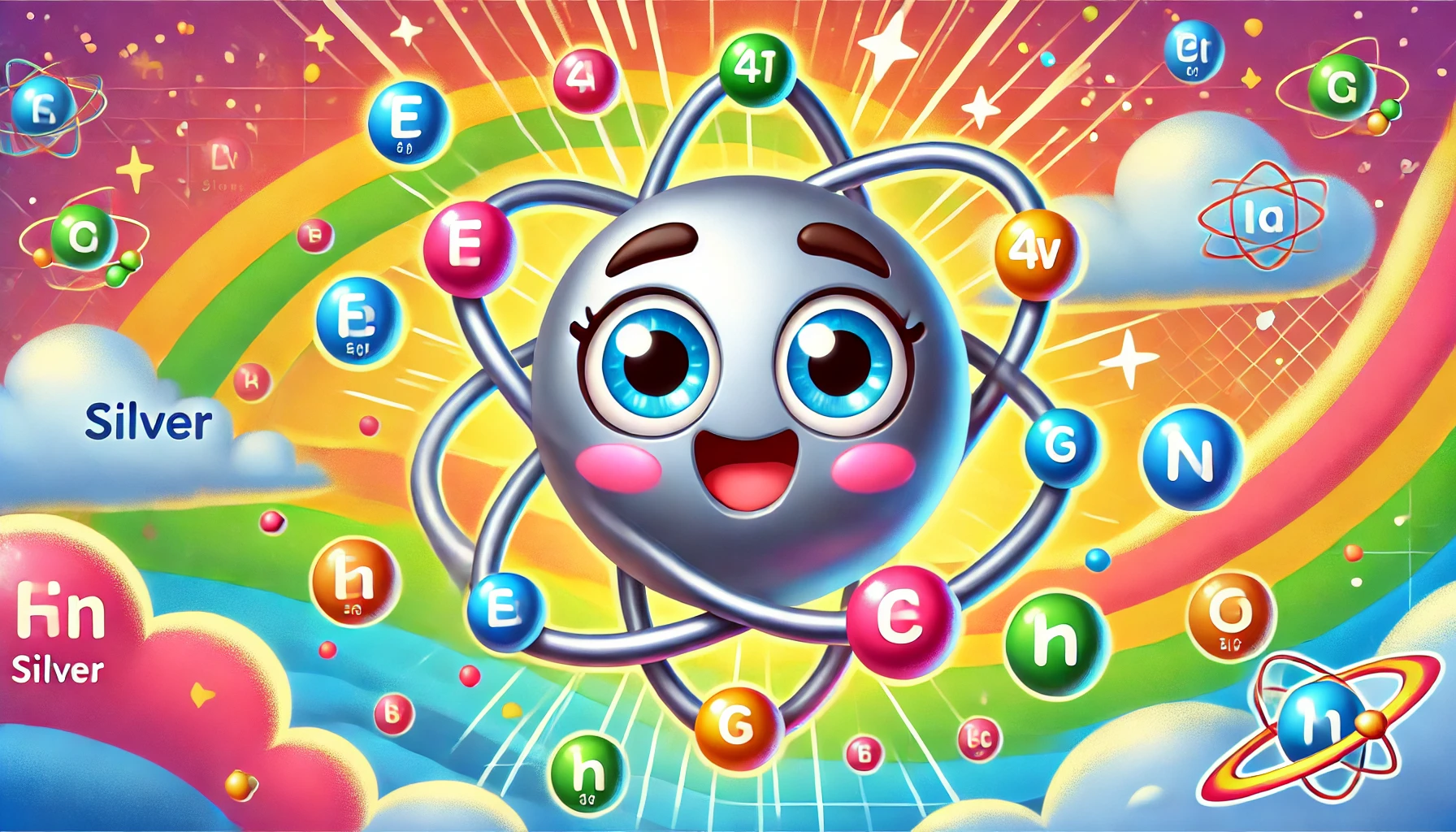Understanding Silver: Properties, Uses, Health Risks, and Fascinating Facts
Understanding Silver: Properties, Uses, Health Risks, and Fascinating Facts
Table of Contents
- Introduction to Silver
- Properties of Silver
- Uses of Silver
- Health Risks of Silver Exposure
- Interesting Facts about Silver
- Environmental Impact of Silver
- Conclusion
- References
Understanding Silver: Properties, Uses, Health Risks, and Fascinating Facts
Introduction to Silver Silver is a chemical element with the symbol Ag and atomic number 47. Known for its lustrous appearance and excellent conductivity, silver has been valued for its beauty and utility for thousands of years. This article explores the properties, uses, health risks, and interesting facts associated with silver, providing a comprehensive understanding of this precious metal.
Properties of Silver Silver is characterized by several distinct physical and chemical properties.
Physical Properties
- Appearance: Silver is a shiny, white metal with a brilliant luster.
- Density: The density of silver is 10.49 g/cm³.
- Melting Point: Silver has a melting point of 961.8°C (1,763°F).
- Boiling Point: The boiling point of silver is 2,162°C (3,924°F).
Chemical Properties
- Reactivity: Silver is relatively stable in air and water, but it tarnishes when exposed to sulfur compounds, forming a black layer of silver sulfide.
- Compounds: Silver forms various compounds, such as silver nitrate (AgNO₃), silver chloride (AgCl), and silver oxide (Ag₂O).
Uses of Silver Silver has numerous applications across different industries due to its unique properties.
Jewelry and Silverware
- Jewelry: Silver is widely used in jewelry due to its luster and malleability. Sterling silver, an alloy of 92.5% silver and 7.5% other metals, is commonly used for making high-quality jewelry.
- Silverware: Silver is used to make utensils, decorative items, and tableware, often prized for its aesthetic appeal and antibacterial properties.
Electronics
- Conductors: Silver is used in electrical conductors, contacts, and switches due to its excellent conductivity. It is also used in printed circuit boards and various electronic components.
- Batteries: Silver oxide batteries are used in small devices such as watches, calculators, and hearing aids due to their high energy density and long life.
Photography
- Photographic Film: Silver halides (AgBr, AgCl) are used in photographic film and paper, as they are sensitive to light and form images upon exposure.
Medicine
- Antibacterial Agents: Silver is used in medical applications for its antibacterial properties. Silver sulfadiazine cream is used to prevent infections in burn wounds, and silver coatings are applied to medical devices to reduce the risk of infection.
- Dressings and Bandages: Silver-infused dressings and bandages are used to promote healing and prevent infection in wounds.
Industrial Applications
- Catalysts: Silver is used as a catalyst in chemical reactions, including the production of ethylene oxide and formaldehyde.
- Mirrors: Silver is used in mirrors and reflective coatings due to its high reflectivity.
Health Risks of Silver Exposure Silver is generally considered to have low toxicity, but there are some health risks associated with exposure to silver compounds and nanoparticles.
Inhalation and Ingestion
- Respiratory Irritation: Inhalation of silver dust or fumes can cause respiratory irritation, coughing, and shortness of breath.
- Gastrointestinal Issues: Ingestion of large amounts of silver compounds can cause gastrointestinal irritation, including nausea and vomiting.
Skin and Eye Contact
- Skin Irritation: Direct contact with silver compounds can cause skin irritation and dermatitis.
- Eye Irritation: Exposure to silver dust or solutions can cause eye irritation and potential damage.
Argyria
- Argyria: Chronic exposure to silver or silver compounds can lead to argyria, a condition characterized by a blue-gray discoloration of the skin, eyes, and mucous membranes. Argyria is usually irreversible but is generally considered to be a cosmetic issue rather than a toxicological one.
Interesting Facts about Silver Silver has several intriguing aspects that make it an interesting element.
Historical Significance
- Ancient Uses: Silver has been used since ancient times for currency, jewelry, and utensils. It was highly valued by ancient civilizations, including the Egyptians, Greeks, and Romans.
- Monetary Value: Silver has been used as a form of money for thousands of years. Many countries still produce silver coins for collectors and investors.
Unique Properties
- Highest Conductivity: Silver has the highest electrical and thermal conductivity of all metals, making it invaluable in electrical and electronic applications.
- Antimicrobial Properties: Silver is known for its antimicrobial properties, which make it useful in medical and hygienic applications.
Isotopes
- Stable Isotopes: Silver has two naturally occurring stable isotopes, silver-107 and silver-109.
- Radioactive Isotopes: Several radioactive isotopes of silver are known, including silver-110m, which is used in scientific research.
Environmental Impact of Silver Silver is not known to have significant environmental impacts, but its extraction and use should still be managed responsibly.
Natural Occurrence
- Abundance: Silver is relatively rare in the Earth’s crust and is typically found in ores containing other metals, such as copper, lead, and zinc.
- Mining: Extraction of silver must be done carefully to avoid environmental damage and ensure sustainable practices.
Industrial Waste
- Waste Management: Proper disposal of silver-containing industrial waste is crucial to prevent environmental contamination.
Conclusion Understanding silver, its properties, uses, health risks, and interesting facts provides valuable insight into this precious metal. While silver is generally safe with low toxicity, appropriate safety measures should be taken when handling silver compounds and dust. Its applications in jewelry, electronics, medicine, and various industries highlight its importance in modern technology and society.

<ⓒ WizardMedics (wizardmedics.com)>






